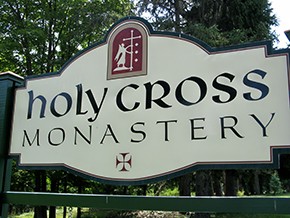Refuge and strength: Finding peace at a monastery
I see the monastery sign and drive past. I’m too ashamed to turn in. So I continue on to the next town where I buy my five-year-old son a hot chocolate and myself a coffee at a convenience store. We sit in a booth by the steamy window watching cars pull in and out and leave deep ruts in the icy slush at the gasoline pump.
I know two monks from California who now live at Holy Cross Monastery in upstate New York. Maybe they can help me. I’m grabbing at every possible lead. I’m chronically ill, exhausted, in shock and about to be divorced. We’re staying temporarily with friends where my nine-year-old daughter numbs herself by watching television. My two older boys are in Germany with their father. For the first time since the age of 22 I have no prayer life. I’m empty, and things will soon become even worse for me. Finally, I find the courage to turn around and drive back toward the monastery.
A few weeks later a sympathetic employee at Holy Cross helps me find a place to live in Poughkeepsie. The children and I try to go to parish churches, but seeing families together distresses my daughter and me. “Why can’t we just go to church at the monastery?” she asks. Why not? My son makes caves for his stuffed animals in the monks’ choir stalls. My daughter primly times the sermons. They love being the only children there. We come home to donuts and the Sunday comics, our clothes scented with incense.





